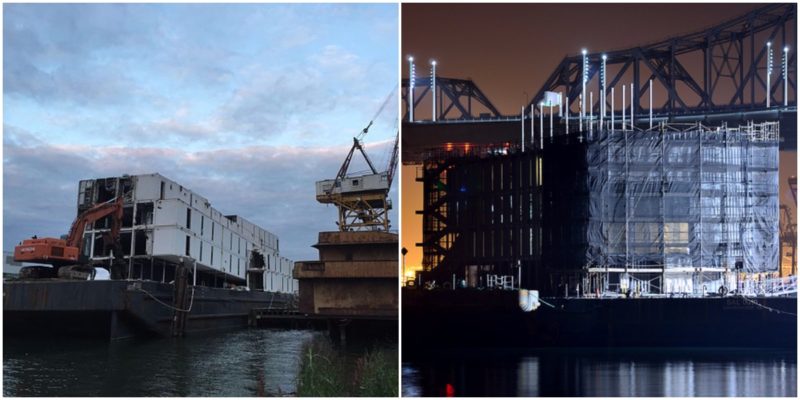The Google Barges are four abandoned floating projects built in 2010 and abandoned by 2013. Very luxurious in their glassy appearance and clearly symbolic in their name, they were supposed to be a floating show space and serve as “an interactive space where people can learn about new technology.” They were also arks that would preserve and serve technology, and make sure mankind’s progress survives the next disaster, whenever it comes and whatever form it takes.
The barges were constructed and positioned under a veil of secrecy and mystery. While they were under construction, the public had no idea what they were supposed to be. Journalists tried to get to the bottom of the mystery but with little success. They managed to trace the barges back to Google, but without any information as to the precise nature of their purpose.
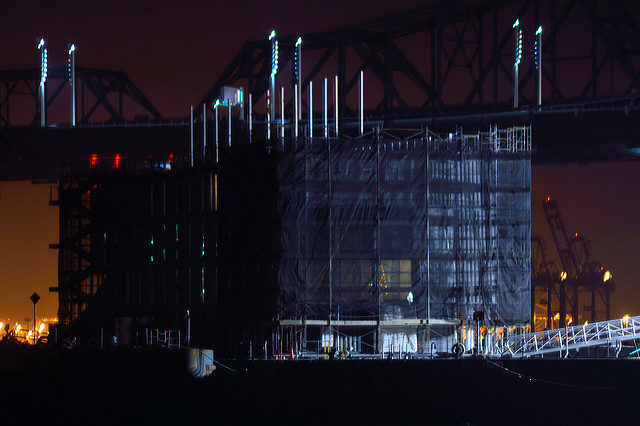
The first barge revealed, code-named BAL0011, was first spotted by journalists from The Day in New London, Connecticut. Its construction began in 2011 and was being carried out by Turner Construction. Behind it, another docked barge of identical size was hidden. After the local coast guard refused to give them information about the new but seemingly already abandoned barges, the journalists from The Day went about obtaining legal documents to demand information.
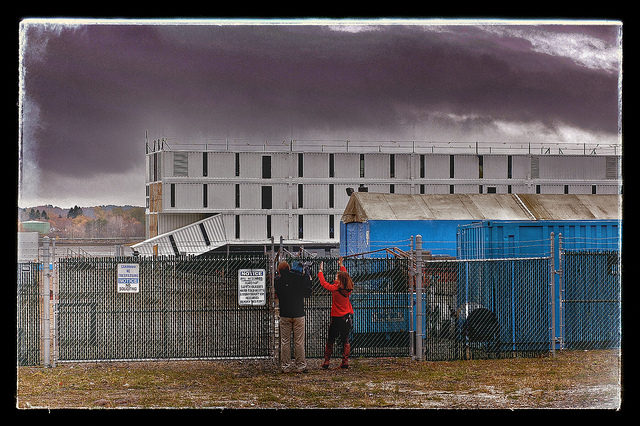
The local coast guard scheduled a press conference in which Michael Tierney from Google Glass also participated. Right there and then the veil of secrecy was removed and the plan for the barges was revealed. They would travel from port to port and present Google’s latest technological developments to all the port cities of the United States of America.
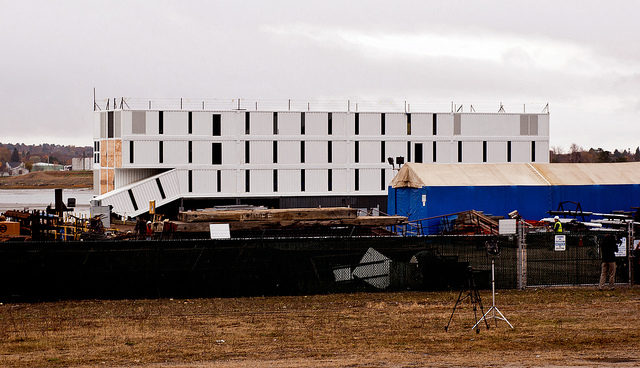
It took the contractors two years to finish welding and putting together barge BAL0011. On October 9, 2013, it was tugged to the city of Portland in Maine. Since Google failed to officially name it, it became known as the Portland Barge. A large structure created from 63 shipping containers, four containers in length, width, and height, plus one slanted container serving the purpose of an entrance.
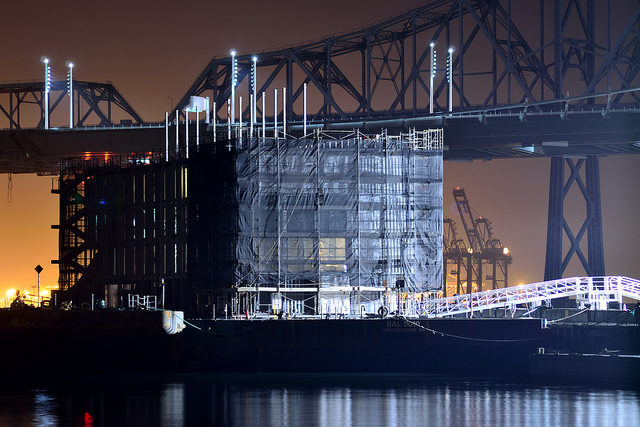
With windows on all three upper floors, it was clear that the interior walls of the inside containers have been removed to create an open and spacious interior. Another interior installation and renovation firm was contracted to do works and installations on the inside, including the addition of “undisclosed technological equipment.” They refused to leak any details about the interior of the barge but explained that Portland was not its final destination.
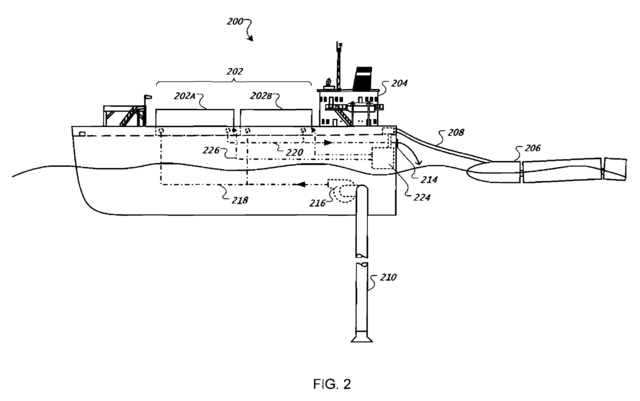
Another potential hypothesis was that the barges might be realizations of Google’s patented “water-based data center.” This patent, granted in 2009, was a plan for a floating data-support system. It would be moored three to seven miles offshore in relatively shallow waters (50-70 meters; 160-230 ft) and use waves and tides for power, also using the sea water for cooling the servers as has been done previously at the Hamina data center in Finland.
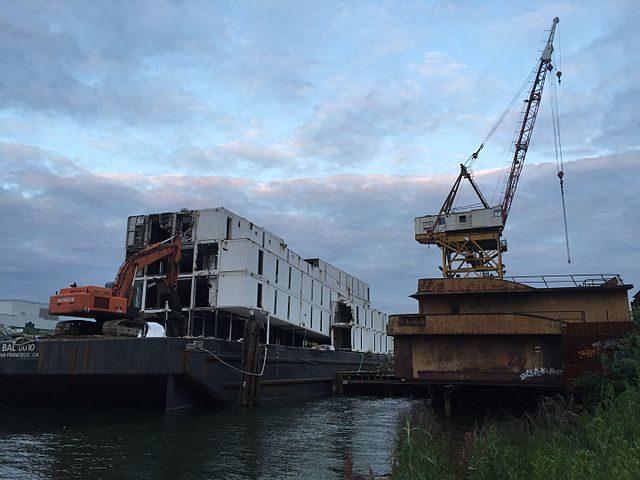
The barge in San Francisco, naturally called the San Francisco Barge, had many issues with port regulations. Even though Google probably decided to use floating objects to avoid city building restrictions, the most fundamental problem they faced is summed up in the following quote from San Francisco port law regulations: “The Bay is not to be used for something that can be built on land.” Google tried to fight against the port blockades without any success.
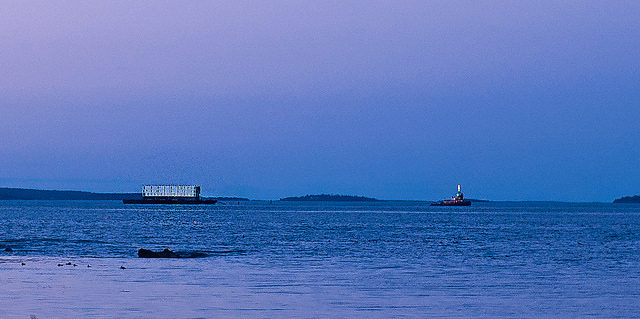
On July 31, the Portland Press Herald published the information that one of the barges had been sold. By November 2014, many different media organizations reported that the Google Barges project had been abandoned and canceled. According to journalists, it was clear that the barges were done. Google released a statement saying that the project is in its early days and more work is coming in the future.
